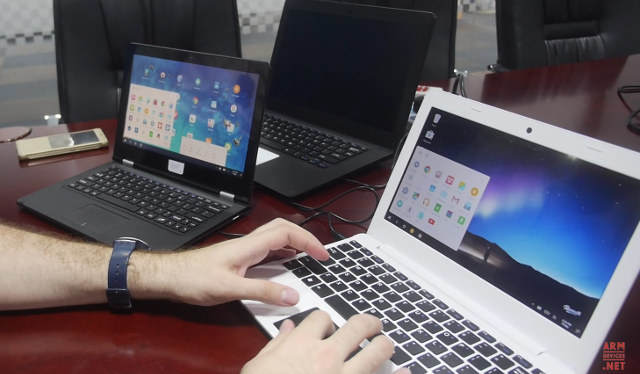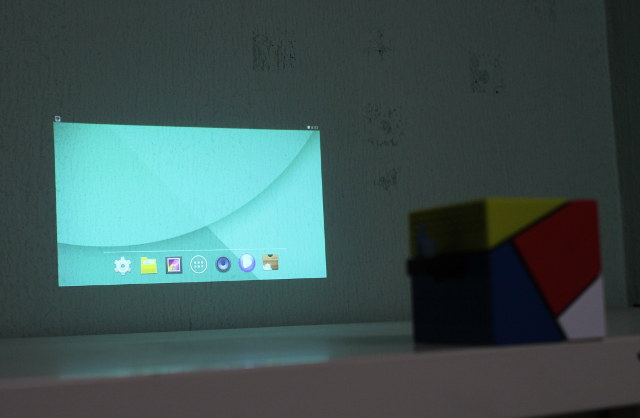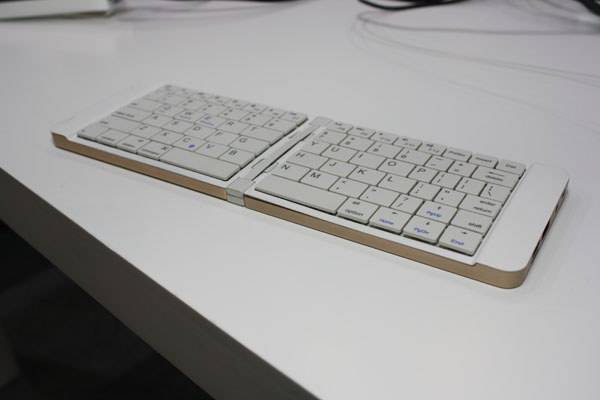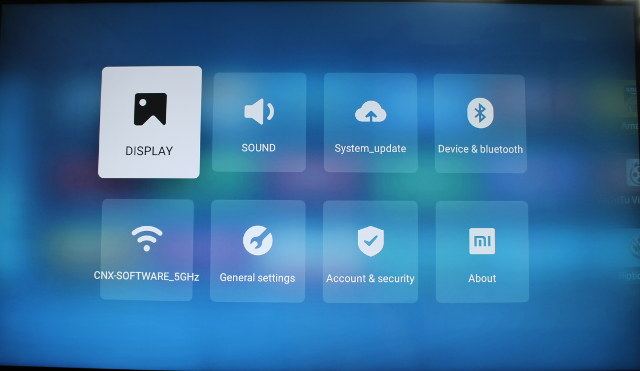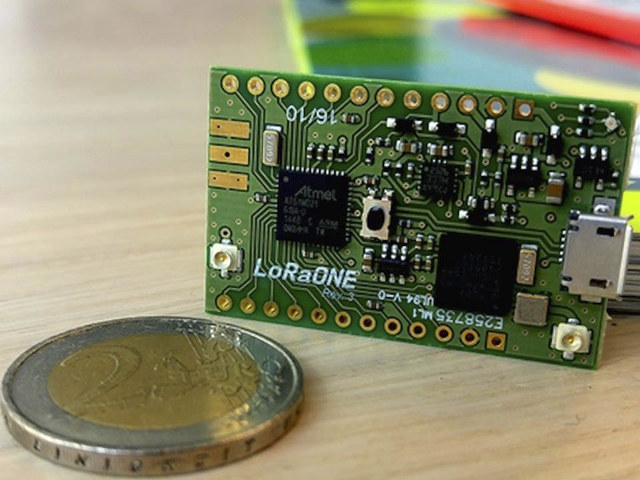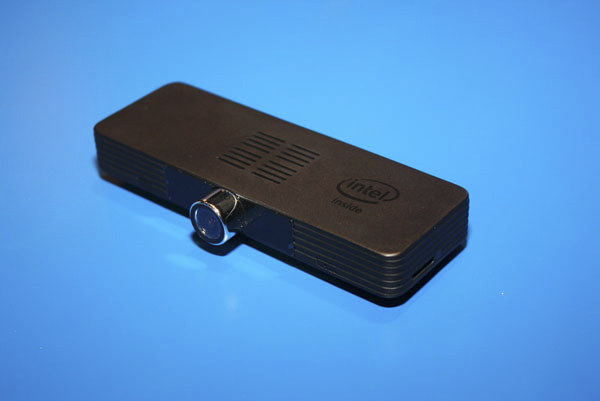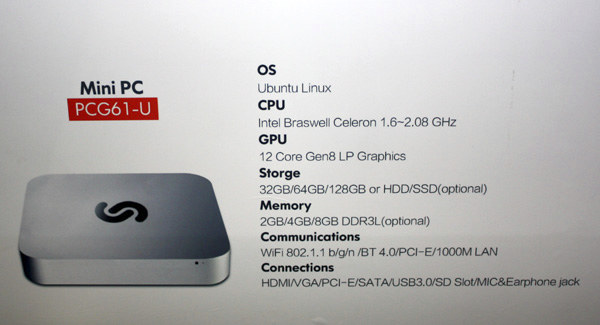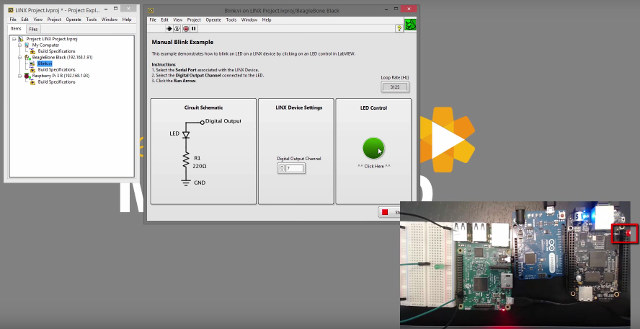Remix OS is a fork of Android making the popular operating system more suitable for desktop use with a start-up menu, better handling of multi-tasking, multi-window support, etc… It’s found in several tablets and TV boxes including Jide’s own Remix mini. But Charbax has showcased a few Remix OS laptop prototypes based on Allwinner A64 processor, with the video apparently shot from Allwinner office. The first model is a white 11.6″ laptop (1366×768) with Allwinner A64 quad core Cortex A53 processor, looking quite similar to Olimex DIY laptop prototype also based on A64, with 1 to 2GB RAM, 8GB to 32GB flash, and a “nice keyboard and touchpad”. The second model is based on the hardware, except the screen is larger (14.1″). It features HDMI output, two USB 2.0 ports, a micro SD slot, and a 3.5mm audio jack. Those two models are expected to sell between $80 and $100 […]
Mini Review of Doogee Smart Cube P1 Android Projector
Doogee Smart Cube P1, or just Doogee P1, is an Android projector powered by a quad core Amlogic processor. I’ve already taken some pictures of the device, and gave it a quick try, so today, I’ll write a little more about my experience using it in standalone mode with an air mouse, as well as with an Android phone using both Miracast and DLNA. The device also supports Airplay, but I don’t think I have any compatible device, so I have not tried this mode. Doogee P1 in Standalone Mode with an Air mouse (or other wireless/USB input device) After connecting MINIX NEO A2 lite air mouse’s RF dongle to the only USB port on the device, I pressed the power button for 5 seconds to start it up, and boot is pretty fast in around 30 seconds. You’ll need to adjust the focus with the wheel button on the […]
PiPO KB2 is a Foldable Keyboard PC Running Windows 10
We’ve already seen a few Windows 10 keyboard PCs, that look similar to the good old Commodore 64, are now being sold, such as K3 Wintel, but PiPO, a manufacturer that likes to try new ideas, has now designed a foldable keyboard PC powered by a Cherry Trail processor, and featuring a battery and support for WiDi for a cable-free experience. PiPO KB2 foldable computer specifications: SoC – Intel Atom x5-Z8300 processor @ 1.44 GHz / 1.84 GHz with Intel Gen8 Graphics System Memory – 2 or 4 GB RAM Storage – 32 or 64 GB eMMC flash + micro SD slot Video Output – HDMI Audio Output – HDMI and 3.5 mm audio jack Connectivity – Wi-Fi 802.11ac & Bluetooth 4.0, WiDi support USB – 1x micro USB port, 1x USB 2.0, 1x USB 3.0 Foldable QWERTY keyboard Battery – 2500 mAh The mini PC, or however you want […]
Xiaomi Mi Box 3 Enhanced Review
We’ve already taken Xiaomi Mi Box 3 Enhanced TV box apart in the unboxing and teardown post, and after changing the language to English, seen the performance is excellent thanks Mediatek MT8693 hexa-core processor, so I’ve done further experiments and tests with the device, and will report my findings in this review. Settings and Power Handling and Consumption Mibox 3 Enhanced boots reasonably fast I can get to the user interface within 30 seconds. We’ve already the main GITV user interface in previous posts, but I had not gone through the settings yet. There are eight main sections: Display Resolution settings – 3840×2160 @ 60/50/SMPTE24/30/24 Hz, 1080p @ 60/50 Hz, 720p @ 60/50 Hz, Scale and position – For overscan adjustment Sound Button sounds – On/Off Sony/Philips Digital Interface Format – PCM/Raw data (actually used for HDMI audio pass-through) System_update – MIUI TV firmware OTA update Device & Bluetooth – […]
LoRaONE is a Small LoRa IoT Development Board Based on Atmel SAMD21 MCU, Microchip LoRaWAN Module (Crowdfunding)
While there are many long range LPWAN standards, LoRa appears to be one of the most popular with boards such as LoPy, and now SODAQ LoRaONE module hitting crowdfunding campaigns. LoRaONE is powered by an Atmel Cortex M0+ micro-controller, features Microchip RN2483 or RN2903 LoRaWAN module, GPS, and various sensors. LoRaONE board specifications: MCU- Atmel ATSAMD21G18 ARM Cortex M0+ micro-controller @ 48 MHz with 256 KB flash memory, 32KB SRAM, and up to 16 KB EEPROM (by emulation) Connectivity LoRa via Microchip RN2483 (433/868 MHz) or RN2903 (915 MHz) module depending on your region GPS via u-blox EVA 7M USB – 1x micro USB port for power and programming Expansion headers (unpopulated) 14x digital pin, 12x for analog and 8x for PWM, plus UART, SPI and TWI (I2C) Analog output pin – 10-bit DAC External Interrupts: Available on all pins DC Current per I/O pin: 7 mA Operating Voltage – […]
Intel Showcases Core m Compute Stick Prototype with RealSense Camera at IDF 2016 Shenzhen
Intel appears to be all-in with their Realsense technology at IDF 2016 Shenzhen, as together with RealSense Robotic Development Kit, the company is showcasing an Intel Core m “Skylake” TV Stick, based on similar hardware as STK2MV64CC Compute Stick with a Core m3 or m5 vPro processor, but adding a Realsense F200 3D depth camera and an array of microphones. The full specifications are not available, but we do know the stick also comes with one USB 3.0 ports, and a yellow USB 2.0 port which should be always-on, a micro USB port for power, and a micro HDMI port to connect the your TV. The stick is supposed to be placed on top of your TV so you’d then be able to control the user interface, play games, etc… using gestures, with potentially other applications made possible thanks to 3D depth sensing such as Windows Hello which allows you […]
MeLE StarCloud PCG61U Ubuntu Mini PC is Powered by Intel Braswell Celeron Processor
So far, most Chinese manufactures of Intel based mini PCs simply ignored Linux distributions, with Windows 8.1 or Windows 10 the only game in town. However, a few days ago, we found out about MeLE PCG02-U TV stick running Ubuntu on Intel Atom Z3735F processor, but the company appears to now taking Ubuntu more seriously as they are now promoting two other Ubuntu products with PCG01-U TV stick, and MeLE StarCloud PCG61U Braswell mini PC at the Hong Kong Electronics Fair. The product is not finalized, but the main specifications are already known: SoC – Intel Braswell Celeron processor @ 1.6 to 2.08 GHz with 12 EU Gen8 Graphics, likely Celeron N3150 processor (6W TDP) System Memory – 2, 4 or 8 GB DDR3L Storage – 32, 64 or 128 GB internal storage, or HDD/SSD slot, SD card slot Video Output – HDMI & VGA Audio – HDMI, microphone and […]
LabVIEW Now Supports Raspberry Pi 2 & 3, BeagleBone Black with LINX 3.0 Release
LabView is a system-design platform and development environment with a graphical programming syntax that “makes it simple to visualize, create, and code engineering systems”. It’s often used with National Instruments hardware such as myRIO, but LabView Makerclub has also developed LINX to bring support to Arduino and chipKIT, and with the latest LINX 3.0, support for BeagleBone Black, and Raspberry Pi boards has been added. You’ll need Labview 2014 (Windows only) or greater to work with LINX 3.0, as well as one of the supported development boards. Complete Labview 2014 + board kits are also sold with the BeagleBone Black Physical Computing Kit and Raspberry Pi 2 Physical Computing Kit both going for $89 on Digilent. LabView files are save in VI format, and the same file can be used on Arduino, BeagleBone Black, and Raspberry Pi board with minor modifications (e.g. GPIO pin number) as shown in the blink […]


